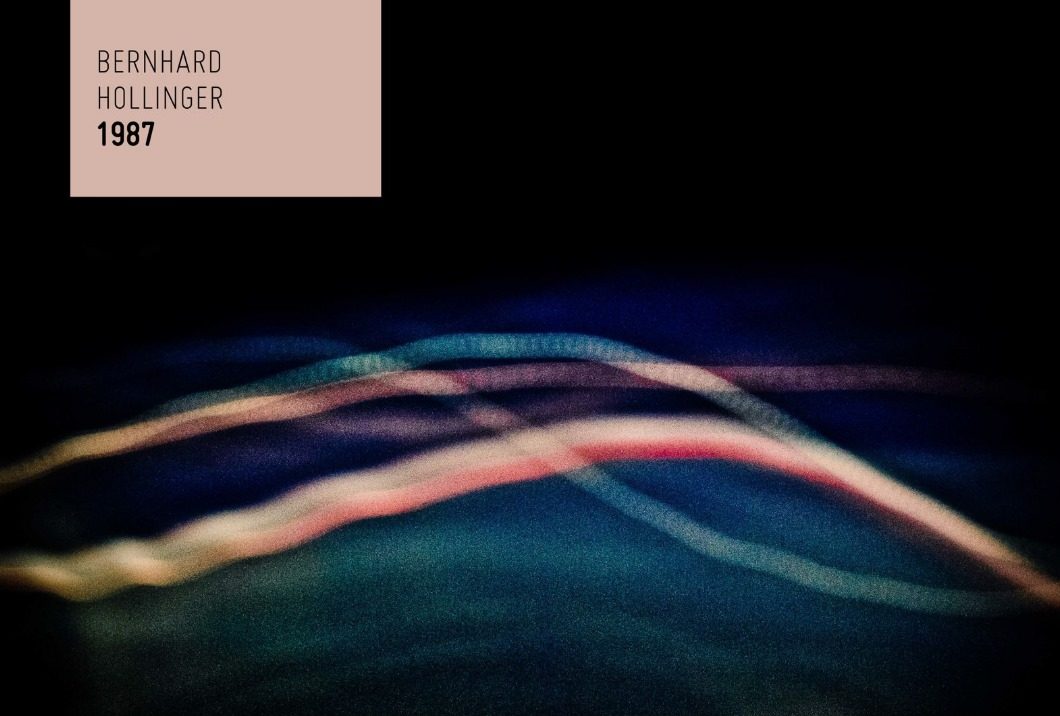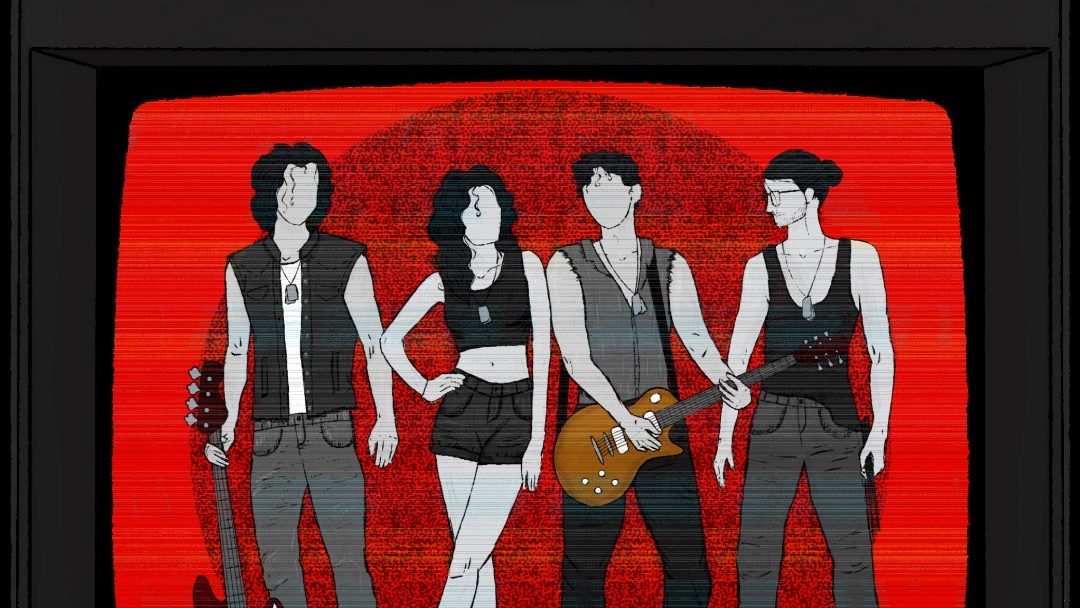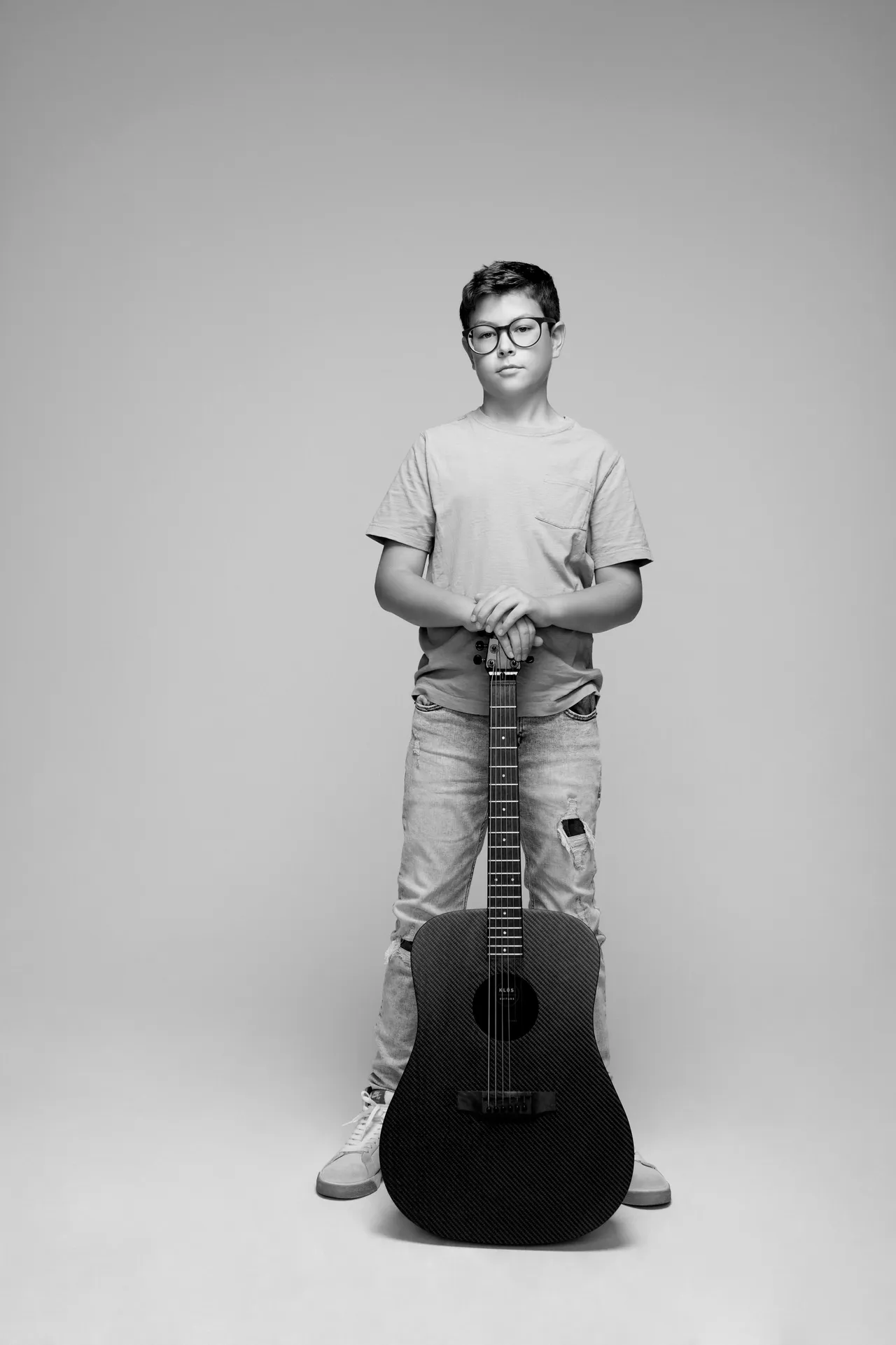Bernhard Hollinger is not your average jazz musician. An award-winning bass player, composer, and producer based in Berlin, Hollinger inhabits a musical world that defies neat categorization. From jazz and improvised music to electronic textures, ambient waves, and avant-garde experimentation, his artistry is fueled by a deep curiosity and a fearless embrace of intuition. Hollinger brings a unique blend of electric bass guitar and electronic effects to stages across the globe. Beyond performance, he’s also a dedicated curator, nurturing experimental sounds through his platform Lo-Fi Playground and exploring sonic landscapes with his monthly radio show Space Lab Transmissions on 90mil Radio. His work isn’t just about music, it’s about creating spaces for adventurous ideas to thrive.

With the release of “1987” on April 25th, 2025, via Boomslang Records, Bernhard Hollinger steps fully into his role as a bandleader and composer, unveiling a record that is as mysterious as it is mesmerizing. “1987” is not just an album, it’s a deep dive into the psyche, a dreamlike odyssey through shifting dimensions and emotional resonance. Inspired by the surrealism of David Lynch’s Twin Peaks, Hollinger uses music as a medium to explore dreams, the subconscious, and intuition. The result is a kaleidoscope of sound that feels both intimate and otherworldly, driven by a vision that embraces ambiguity and invites interpretation. Every sonic detail in “1987” feels intentional yet open-ended. The compositions blur genre lines, drawing from jazz improvisation, ambient textures, electronic manipulation, and avant-garde structures. Hollinger isn’t interested in creating easily digestible melodies; he’s interested in experience, sonic experiences that provoke thought, unlock emotions, and shift perception.
The album’s soundscapes are crafted with precision and freedom, bending time and structure in ways that mirror the nonlinear nature of dreams. Collaborating with an exceptional ensemble of international musicians, including Grammy-nominated guitarist Ashton Sellars, trumpeter Ashlin Parker, guitarist Teis Semey, and pianist Larry Sieberth, Hollinger amplifies the album’s vision through collective chemistry. Each contributor brings their own color and intensity to the mix, yet it’s Hollinger’s voice that grounds the project.
1987 Album Track List:
Fly:
“Fly,” the opening track of Bernhard Hollinger’s “1987”, sets the tone for the album with an exhilarating sense of lift-off, both musically and emotionally. The track unfolds with a gentle, slow-building introduction, allowing each layer of instrumentation to settle into place before ascending into a breathtaking crescendo. This build-up isn’t rushed; it’s deliberate, coaxing the listener into a rising arc of momentum. The dynamic tension created through this gradual climb is resolved in a euphoric release, establishing the track as a masterclass in emotional pacing and sonic storytelling.
A central highlight of “Fly” is the seamless collaboration between guitarist Ashton Sellars and the Alegria Quartet. Sellars’ guitar work is virtuosic yet restrained, threading melodic lines with precision and passion. Meanwhile, the strings of the Alegria Quartet bring a sweeping, cinematic texture that elevates the track’s emotional weight. Together, these elements don’t just coexist, they engage in a dynamic dialogue, creating a rich and layered atmosphere. The rhythm section, particularly the drums, injects urgency into the track, driving it forward with pulsing energy and adding to the track’s palpable momentum.
From a production standpoint, “Fly” exemplifies Hollinger’s meticulous attention to sonic detail. Every instrument has space to breathe, yet the overall mix remains tight and cohesive. The track radiates a sense of freedom, joy, and exhilaration, making it not just a compelling opener, but a microcosm of the album’s overarching themes. There’s a clarity to the sound that underscores its emotional intent, a kind of sonic optimism that mirrors the act of flying itself. As the first step into the dreamscape of 1987, “Fly” leaves the listener both grounded in musical mastery and ready for takeoff into the unknown.
Through the Darkness of Future Past, No More Dark, Through:
“Through the Darkness of Future Past, No More Dark, Through” is a strikingly evocative follow-up to the high-energy opener of Bernhard Hollinger’s “1987”, immediately plunging the listener into a deeper and more introspective soundscape. This second track is a sonic meditation on the contrast between childhood innocence and the gradual onset of disillusionment. It begins with a fragile, childlike melody, delicate and almost playful, that slowly unravels into a hauntingly distorted realm of eerie synth textures. This deliberate transition captures the unraveling of innocence, evoking a sense of nostalgia tainted by the shadow of time and experience.
The Instrumentation is layered with remarkable finesse, as Hollinger juxtaposes the tender and the unsettling with precision. The once-bright melodic fragments are overtaken by darker tones, with synthesizers creeping in to cloud the purity of the initial theme. The result is a feeling of descent, an emotional slip from wonder into unease. This contrast is central to the track’s impact, showcasing Hollinger’s ability to tell complex emotional stories through sound. The production is immaculate, giving each element clarity while allowing the tension between innocence and distortion to dominate the sonic landscape.
Emotionally, the track is both sacred and unsettling. There’s a spiritual gravity to its progression, a sense of being caught in the twilight space between memory and reality. As the song reaches its climax, the energy becomes almost ritualistic, haunted by the echoes of lost clarity. The ambiance is undeniably eerie, yet it’s never gratuitous; rather, it serves a clear narrative purpose. In this piece, Hollinger reveals the emotional and thematic depth that permeates “1987”, offering a powerful, cinematic experience that lingers long after the final note.
Winter Melody:
“Winter Melody,” the fourth track on Bernhard Hollinger’s “1987”, marks a tonal shift in the album’s journey, one that embraces stillness, reflection, and a quiet kind of emotional release. From its opening moments, the track introduces a warped, brass-forward lead that feels simultaneously strange and soothing. There’s a meditative quality to this sound, like observing the gentle movement of ripples across a frozen lake. It’s an oddity by design, unsettling at first glance but deeply calming once the listener settles into its rhythm.
As the track unfolds, the instrumentation gradually finds its footing, moving with growing clarity into a jazz-driven rhythm that brings a gentle warmth to the composition. The transition feels like an exhale, an elegant release of held breath. Brass elements mingle with the rhythm section in a way that feels deeply rooted in jazz tradition, yet the structure never becomes predictable. Hollinger keeps the listener engaged by balancing form and freedom, allowing experimental textures to coexist with melodic beauty. It’s in this space between improvisation and intention that “Winter Melody” truly shines.
The production is as refined as it is intimate, offering every instrument room to resonate without overwhelming the composition’s delicate balance. There’s a calm energy that flows throughout the piece, never stagnant, always moving just beneath the surface. It’s the kind of track that leaves an emotional imprint long after it ends, quietly stirring something unspoken. With “Winter Melody,” Hollinger demonstrates his mastery not just as a bassist and composer, but as a mood-setter, someone capable of transforming sound into a meditative experience that is both deeply personal and universally resonant.

Sleeping Tapes:
“Sleeping Tapes,” the final track on Bernhard Hollinger’s “1987”, serves as a gentle descent from the album’s complex emotional arc into a state of serene reflection. As a tribute to Keefus Ciancia’s “Introduction to Sleeptapes,” the piece honors its inspiration through hypnotic vocal repetitions that immediately establish a liminal, in-between quality; a space where reality and dreams blur. These vocal patterns are not merely decorative; they act as a guide, leading the listener gently into an altered state of consciousness.
Hollinger’s minimalist approach on “Sleeping Tapes” is deliberate and powerful. Rather than relying on intricate melodies or percussive drive, the track builds through texture and tone, placing emphasis on how sounds feel rather than where they go. The instrumentation is sparse, but never lacking, every element has been chosen and placed with care. As the track evolves, the hypnotic repetition deepens, and the listener is slowly drawn into a meditative space that feels timeless.
Despite Its subdued nature, there’s a quiet intensity to the track, a pulse beneath the calm that gives it life. As the final moments of “1987” unfold, “Sleeping Tapes” doesn’t so much conclude the journey as it dissolves it, leaving the listener suspended in a state of peaceful contemplation. It’s a fitting closer for an album so rooted in dreams, intuition, and subconscious exploration, a gentle reminder that sometimes, the most profound experiences come not from resolution, but from surrender.
Production-wise, “1987” is polished but not sterile. Tracks were recorded by Lex Tanger and Dennis Kizilirmak in Berlin studios, and the mixing duties were shared across a talented team, with Hollinger himself involved in the process. The sonic clarity allows the intricate layers of sound to breathe, from ambient interludes to explosive improvisations. One standout track is Track 5 which is the closing track of the album. “Sleep Tapes” originally composed by Keefus Ciancia (aka Weelo) as “Introduction to Sleeptapes”, seamlessly fits into the album’s eerie, surreal atmosphere, reinforcing its Lynchian spirit. The rest of the compositions are all original works by Hollinger, each a piece of a larger sonic puzzle that slowly reveals its shape the more you listen.
In many ways, “1987” feels like a personal manifesto, a musical expression of transformation and introspection that was years in the making. It’s an album that resists casual listening, demanding attention and rewarding those who dare to enter its dreamscape. Bernhard Hollinger has delivered a debut that is both cerebral and deeply felt, a genre-defying work of art that pushes boundaries while inviting you to surrender to the unknown. If you’re looking for music that challenges convention and dives headfirst into the subconscious, “1987” is a must-listen.
For more information about Bernhard Hollinger, click on the icons below:



